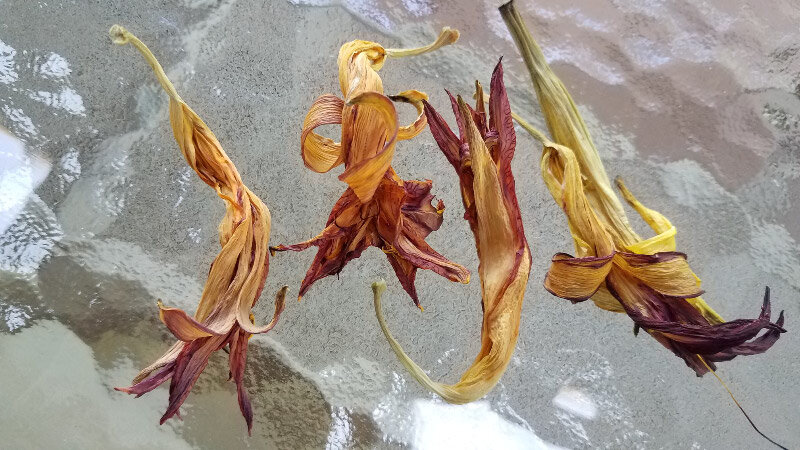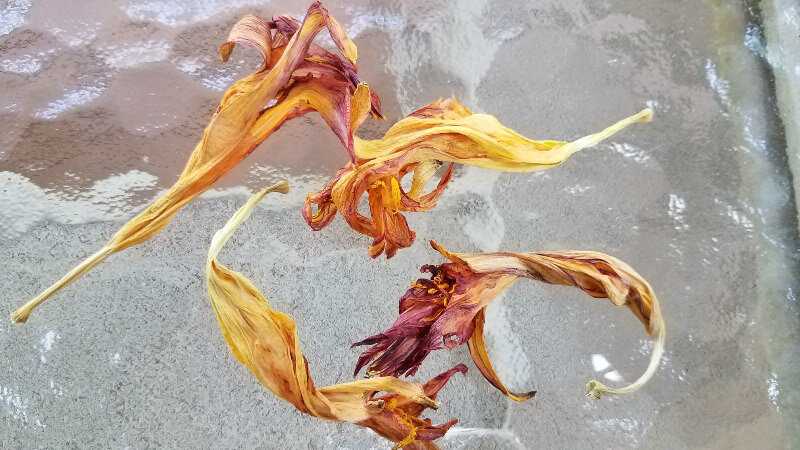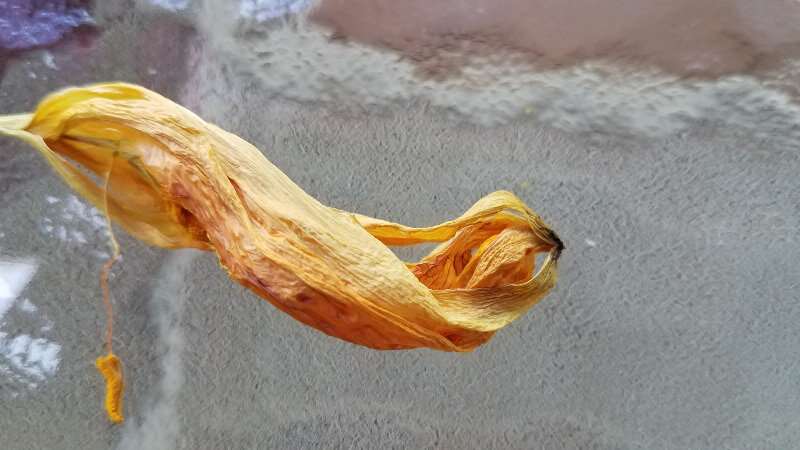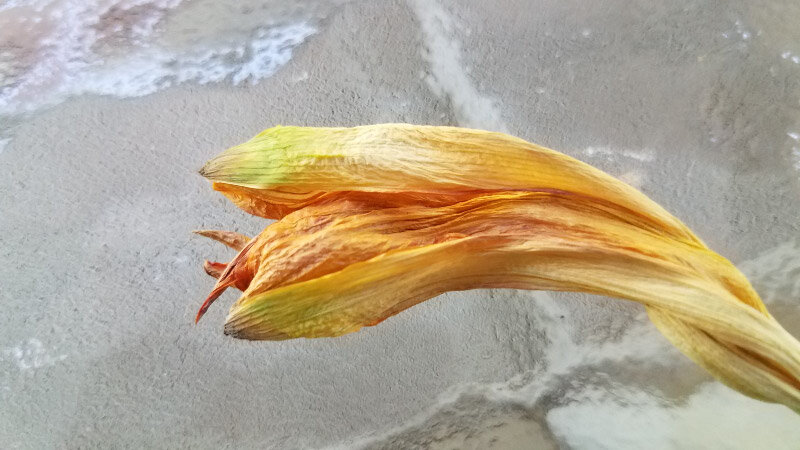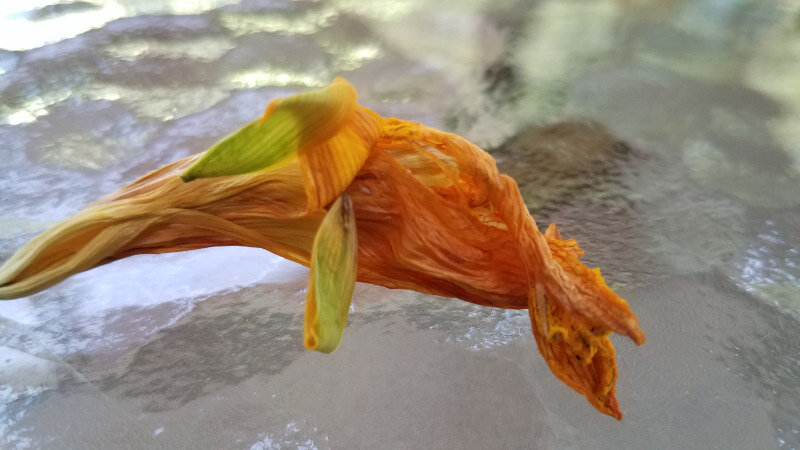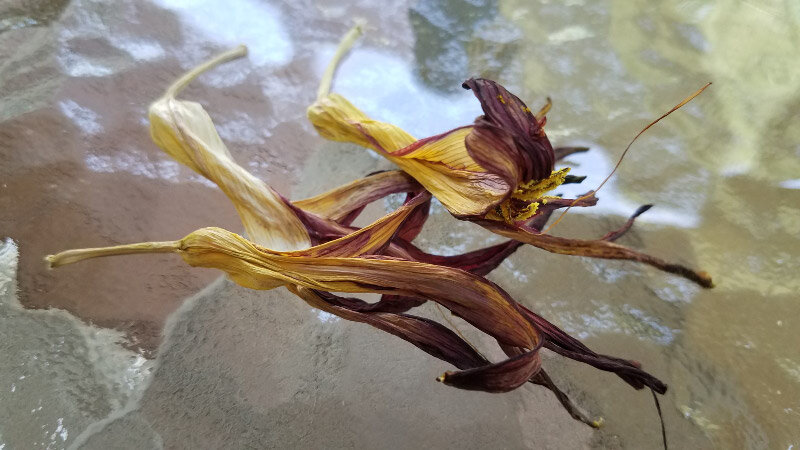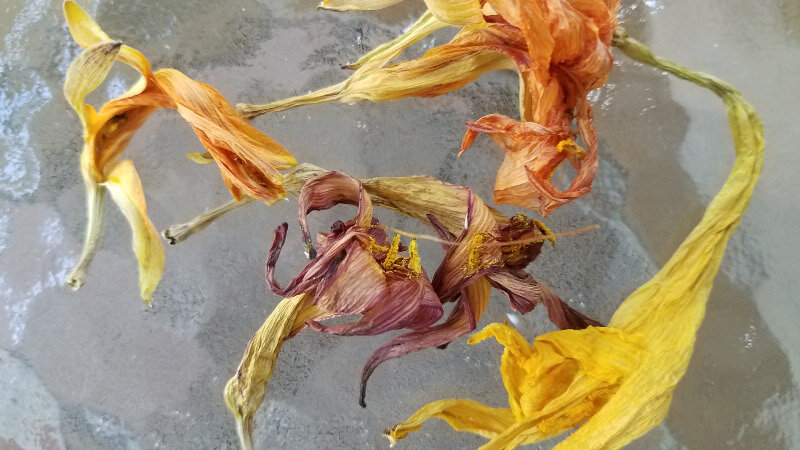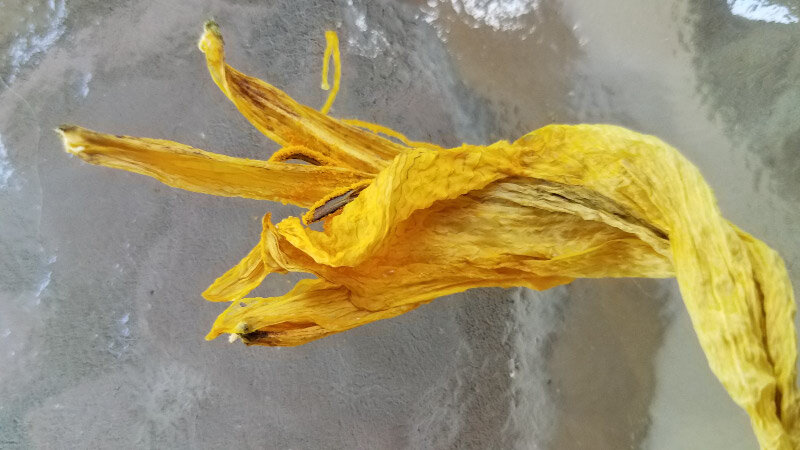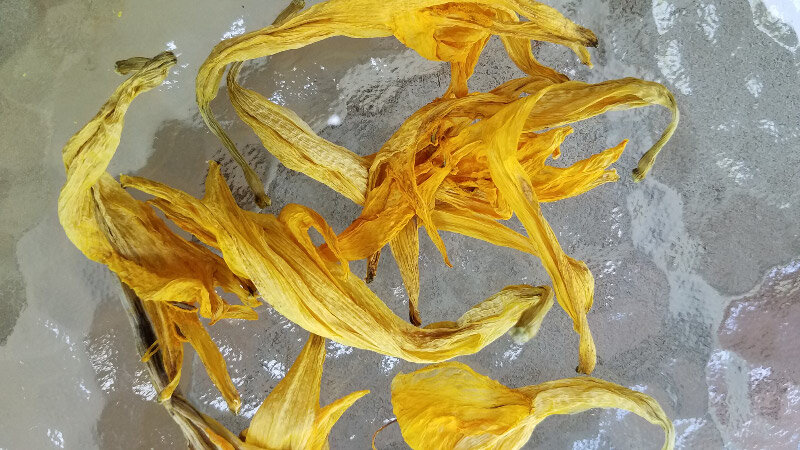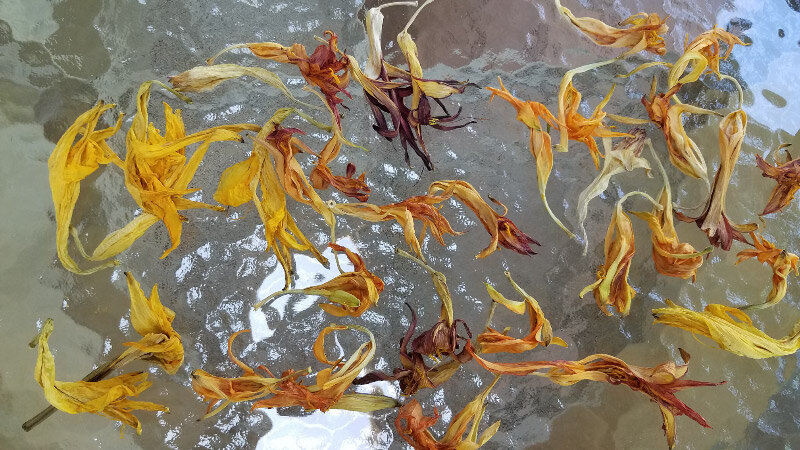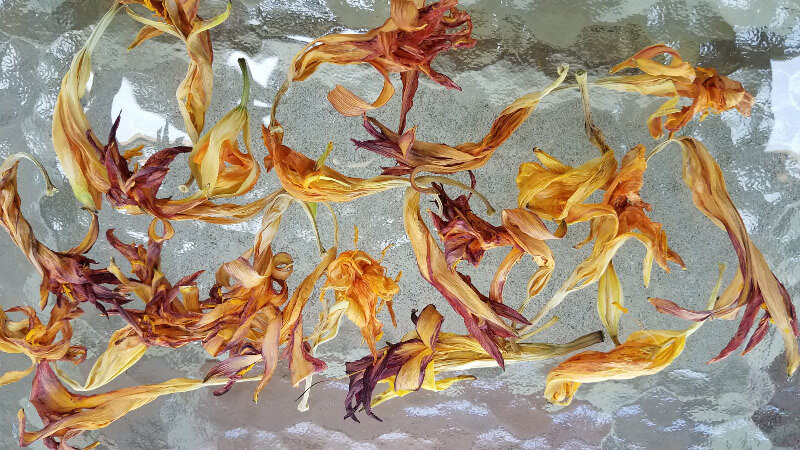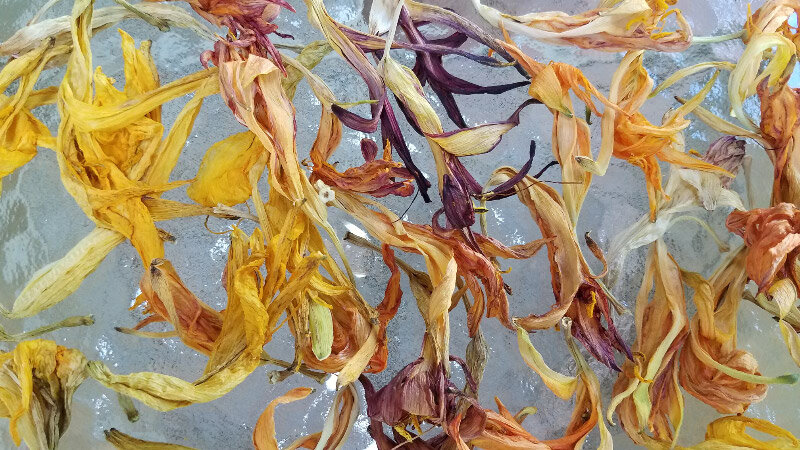Last of the Day Lilies
/The last day lily opened a few days ago so I am savoring what is left of them today – the last of the day lilies for this year. I collected the spent flowers as they fell from the stalks and took them out to the glass topped table on my deck to photograph for the grand finale of their season. The orange ones were the most plentiful, the yellows were the largest and the dark red (purple when they dried) were few but spectacular.
I like the textures and shapes of the dried flowers. Many still have deep yellow pollen showing. The flower collection is back inside now…waiting to see if my husband wants to do some macro photography with them. Eventually they will go out to the compost bin.
Unique Activities for Yesterday:
Big cooking day. I like to fill the oven when I turn it on at all during the summer. This time I had it on for an hour with the salsa meatloaf going in first….then a zucchini squash custard (45 minutes)…then corn on the cob (30 minutes). I sautéed an onion to top the meatloaf. Good eating! It also felt good to clear the crisper of the last of the corn, onions, and zucchini since I have another CSA share to pick up today! I still have beets, leeks, fennel, carrots, and cauliflower….and not much freezer space.
Grapevine wreath. After a round of yard work back in June, I made a small grapevine wreath. Now – a little over a month later – it is thoroughly dry. I like the way it looks, particularly the little tendrils. I’ll add a festive ribbon and use it for indoor holiday decoration….or maybe I’ll use a ‘ribbon’ of orange or apple peel. Then the whole thing could go into the compost pile in the new year.

